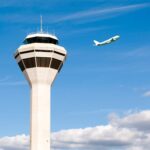
Key Takeaways
- Understanding the types of emergencies that can occur on a private jet is the first step to preparedness.
- Immediate response and staying calm are crucial for managing in-flight emergencies effectively.
- Pre-flight preparations, including safety briefings and equipment checks, are essential for passenger safety.
- Clear communication during an emergency ensures everyone on board is informed and ready to act.
- Post-incident actions, including debriefs and maintenance reviews, help improve future safety measures.

Your Safety Blueprint for Private Jet Emergencies
When you’re soaring at 30,000 feet, the last thing you want to think about is an emergency. But being prepared can mean the difference between a close call and a catastrophe. Let’s talk about what you need to know to handle the unpredictable and inspire confidence in your ability to fly safely.
Understanding the Stakes in Private Aviation
Private jets offer luxury and convenience, but they also come with unique risks. Unlike commercial flights, where the crew handles emergencies, private jet passengers might need to take a more active role. Knowing the stakes involved in private aviation, you’ll understand why it’s so important to be prepared.
Immediate Response: The Golden Rule in Emergencies
When an emergency hits, your immediate response is critical. The golden rule? Stay calm and act decisively. Panic can cloud judgment and waste precious seconds. Whether it’s a medical emergency, an engine failure, or severe weather, how you react in those first moments can make all the difference.
Core Types of Private Jet Emergencies
Engine Failure: Keeping Calm when Power is Lost
Engine failure is a pilot’s test of skill and a passenger’s test of nerve. If you hear the engines go quiet, remember that jets are designed to glide and pilots are trained for this. Trust your pilot, but also know your role. That means keeping aisles clear and following instructions.
Example: During a flight I was on, the right engine failed. The pilot kept us informed, and although the silence was unnerving, we knew we were in capable hands. The jet glided smoothly to a lower altitude and we made a safe emergency landing.
Most importantly, in the case of engine failure:
- Remain seated and follow the pilot’s instructions.
- Stay calm to help maintain a clear-headed environment for everyone on board.
- Be aware of the location of emergency exits and equipment.
In-Flight Medical Emergencies: Rapid Response Tactics
Medical emergencies require swift action. If someone falls ill, it’s crucial to assess their condition quickly and provide assistance. Private jets often have medical kits on board, and knowing how to use them is vital.
Because you may be far from the nearest hospital, it’s helpful to:
- Know basic first aid and CPR.
- Understand how to use the medical equipment on board.
- Alert the crew immediately so they can assist and potentially divert the flight if necessary.
Fire Onboard: Containment and Extinguishing Steps
A fire onboard is a serious threat. Your first move should be to alert the crew. They’ll tackle the flames with extinguishers or fire suppression systems. Your role is to stay out of the way unless directed otherwise and prepare for a possible emergency landing.
Besides that, remember:
- Don’t try to fight the fire yourself unless you’re instructed to do so.
- Know where fire extinguishers are located and how to use them.
- Listen to the crew for guidance on whether to use oxygen masks or move to a different part of the jet.
Systems Malfunction: Troubleshooting in the Sky
Modern jets are complex machines, and a system malfunction can be daunting. Pilots have checklists for every conceivable issue. As a passenger, your job is to stay informed and cooperative, giving the crew the space to work through their procedures.
Therefore, if a malfunction occurs:
- Stay seated and keep the aisles clear.
- Pay attention to announcements from the cockpit or crew.
- Prepare to follow any instructions quickly and calmly.
Weather Woes: Navigating Through the Unexpected
Unexpected weather can turn a routine flight into a turbulent ordeal. Trust your pilot to navigate through it. They have the training and technology to handle such situations. You can help by staying seated with your seatbelt fastened and keeping calm.
And remember:
- Turbulence, while uncomfortable, is a normal part of flying and jets are built to withstand it.
- Follow the crew’s instructions, especially regarding electronic devices and seatbelts.
- Stay calm and reassure fellow passengers if needed.
Comprehensive Safety Briefings: Knowledge Saves Lives
Before your jet even leaves the tarmac, a thorough safety briefing can equip you with the knowledge you need in an emergency. It’s more than just a formality; it’s a crucial run-through of the procedures that could save your life. Pay attention to the location of exits, how to use the safety equipment, and the brace position you’ll need in case of a rough landing.
Emergency Equipment: What’s Onboard and How to Use It
Do you know what safety gear is on your jet? It’s not just about having it onboard; it’s about knowing how to use it. From life vests to oxygen masks and fire extinguishers, familiarize yourself with everything. In an emergency, you won’t have time to read instructions.
Every private jet should have:
- An automated external defibrillator (AED)
- At least one fire extinguisher
- Emergency medical kit
- Oxygen masks and portable oxygen units
- Life vests or flotation devices if flying over water
Fuel Management: Ensuring Ample Supply for the Unexpected
Fuel management is a pilot’s game, but as a passenger, it’s good to know that there’s enough gas in the tank to get you to your destination — and then some. Pilots plan for extra fuel in case of diversions or delays. That extra reserve is your safety net in the sky.
Active Emergencies: Commanding Calm and Clarity
In the heart of an emergency, staying clear-headed is your superpower. It’s about maintaining a sense of calm that can spread to others. If you’re in charge, your demeanor sets the tone for everyone else. Be the calm voice that guides and reassures, and you’ll keep the situation under control.
Landing Procedures: When and How to Execute Emergency Landings
Should an emergency landing become necessary, it’s the pilot’s role to get the jet down safely. Your role as a passenger is to follow their lead. Brace as instructed, keep your seatbelt fastened, and prepare for the next steps once the jet is on the ground.
Post-Landing Protocols: Securing Passenger Safety after Touchdown
Once you’ve landed, the emergency isn’t necessarily over. Exiting the aircraft safely is your next priority. Leave your belongings — your life is more important than your laptop. Follow the crew’s directions to evacuate quickly and safely to a secure area.
Option B.
Debrief and Reporting: Learning from the Event
Following an emergency, a thorough debrief is crucial. Discuss what happened, how it was handled, and how the response could be better next time. This step isn’t just for the crew; passengers can provide valuable insights into the emergency procedures and their effectiveness.
Psychological Support: Addressing Trauma after Emergencies
Emergencies can leave emotional scars. It’s important to address any trauma or anxiety that may follow. Don’t hesitate to seek professional help if you’re struggling after an incident. Your mental health is as important as your physical safety.
Maintenance Review: Preventing Future Incidents
Finally, a thorough review of the jet’s maintenance logs can help pinpoint any mechanical issues that led to the emergency. It’s about closing the loop and ensuring that every aspect of the jet is in top condition to prevent future incidents.
Essential Training for Every Passenger

Being a passenger on a private jet isn’t just a passive experience. It’s your responsibility to be as prepared as possible. That means engaging in emergency drills and knowing the basics of first aid and CPR. When everyone on board is trained, the jet becomes a safer place for all.
Emergency drills should include coping with in-flight emergencies.
- Evacuation procedures
- Using the emergency exits and slides
- Locating and using safety equipment
And when it comes to first aid:
- Know how to recognize signs of common medical emergencies like heart attacks or strokes.
- Understand how to perform CPR and use an AED.
- Be familiar with the contents of the medical kit and how to use them.
Being prepared for a medical emergency is equally important. Knowing how to perform CPR or use an AED can save lives. Don’t wait until it’s too late to learn these skills. Many lives have been saved because someone on board knew the basics of emergency medical response.
Emergency Drills: Practice Makes Perfect
Regularly participating in emergency drills can sharpen your instincts and ensure you’re ready for the unexpected. Practice locating the nearest exit and using the safety equipment provided. Remember, in an actual emergency, you might not have much light or time, so knowing these procedures by heart is key.
First Aid and CPR: The Skills Everyone Should Know
First aid and CPR are life-saving skills that everyone, not just those who fly, should know. In the air, medical assistance is not immediately available, so being able to provide basic care is critical. Many private jets are equipped with AEDs, and knowing how to use one could be a game-changer in a cardiac emergency.
Consider this: A fellow passenger is in distress, showing signs of a heart attack. You’ve practiced CPR and know where the AED is located. Your quick action and knowledge could mean the difference between life and death. This isn’t just about being a good passenger; it’s about being a good human.
FAQ
When it comes to handling emergencies in private jets, you might have questions. Here are some of the most common ones, along with clear, actionable answers to ensure you’re informed and prepared.
What should I do first in the case of a private jet emergency?
Your first action in any emergency is to stay calm. Then, follow the crew’s instructions immediately. If you’re trained, assist with emergency procedures only if asked. Remember, the crew is trained for these situations and will direct you on what to do.
For example, if there’s a fire onboard, you’d alert the crew, then follow their directions, which might include moving to a different part of the aircraft or helping with the extinguishers if you’re asked and able.
How are private jet emergencies different from commercial flights?
Private jet emergencies often require more direct involvement from passengers because there are fewer crew members. You’re in a smaller, more intimate setting, which means you might be called upon to help with equipment or even assist in medical emergencies.
What equipment is available on private jets for emergencies?
Private jets are equipped with various safety equipment, including but not limited to:
- Oxygen masks and portable oxygen units
- Automated External Defibrillators (AEDs)
- Fire extinguishers and fire suppression systems
- Emergency medical kits
- Life vests or flotation devices for over-water flights
Knowing how to use this equipment is crucial. Ask for a demonstration or instructions if you’re not familiar with any of the items.
How often should safety equipment on private jets be checked?
Safety equipment on private jets should be inspected regularly, typically before each flight. It’s part of the pre-flight checklist that ensures everything is in working order and ready for use if needed.
Set out on an unforgettable journey! Click here to request a quote or commence your extraordinary travel experience: Launch Your Adventure.













